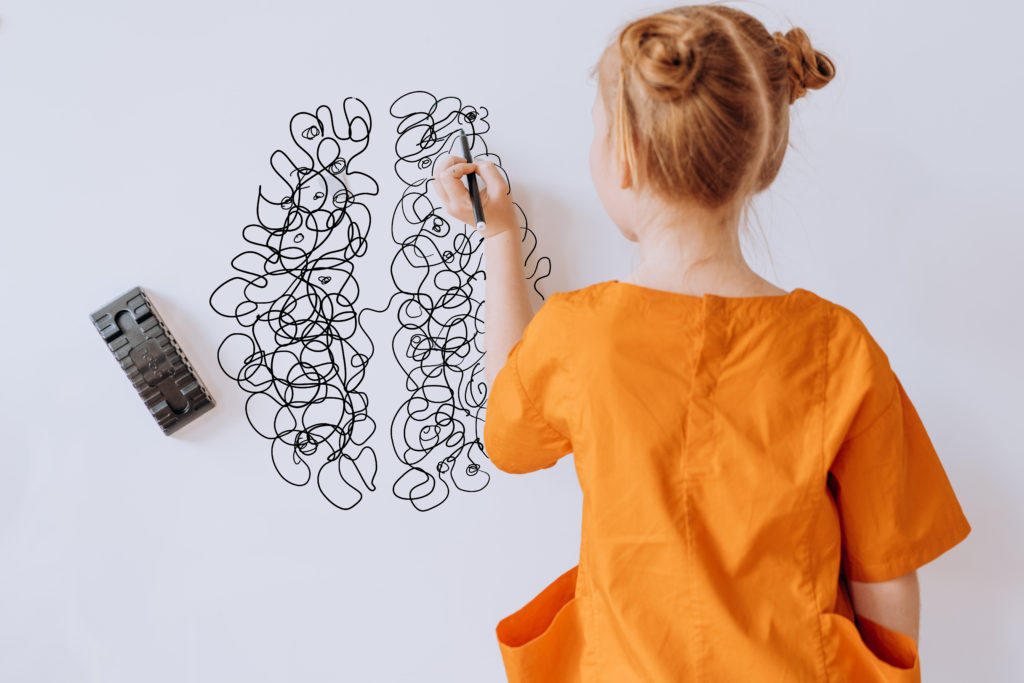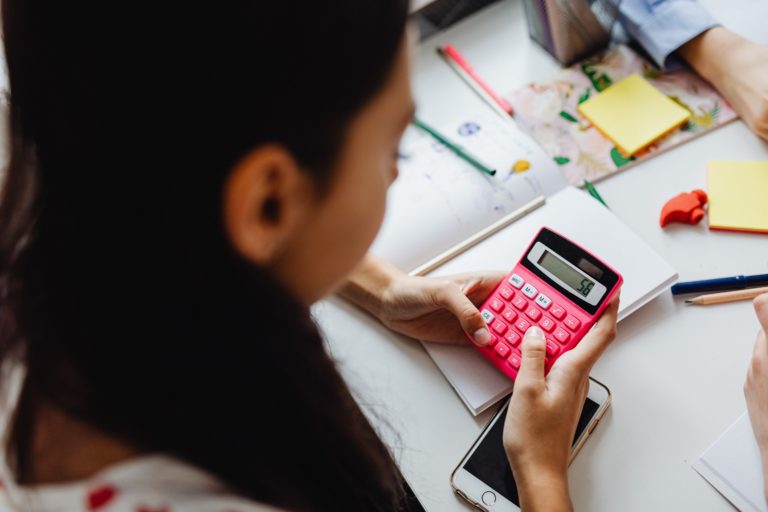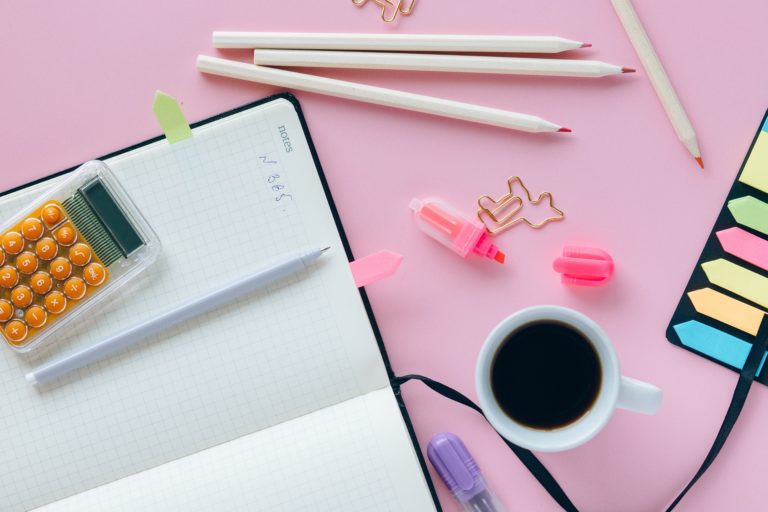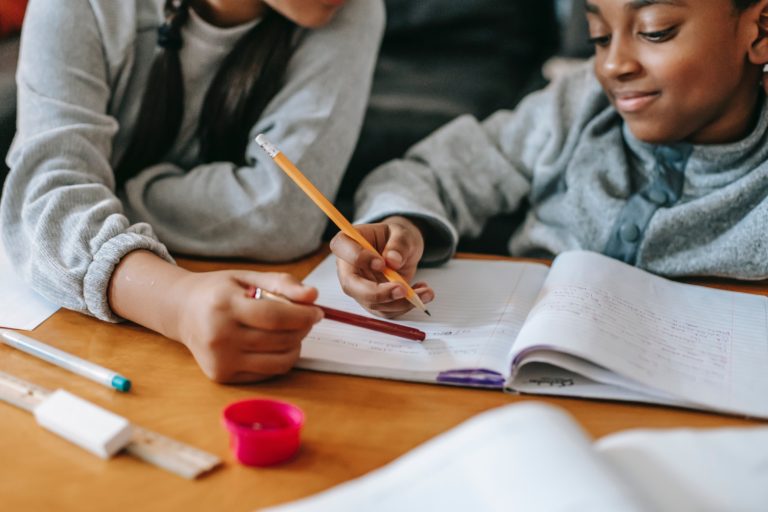Teaching your child how the brain learns is vital in quashing a common maths myth—the belief that you’re either good with numbers or not. Many people are led to believe they’re either a ‘maths’ person or not. This myth is sadly everywhere, on TV, in books, and in our classrooms.
By understanding how the brain learns, it will empower your child to see their own learning potential. It’s the first step in tackling ‘I’m not good at maths’ thinking and adopting a growth mindset.
Studies have shown that people with a growth mindset do better in maths. This is because growth mindset people behave in helpful ways when they come across difficulties. They’ll try harder and longer because they don’t think that trying hard means they’re not smart.

Explaining how the brain works
Here’s an article, Understanding your brain to help you learn better, that explains how the brain learns in a simple way, and highlights a couple of learning strategies to try.
Your brain is primarily composed of about 85 billion neurons. A neuron acts as a messenger, sending information in the form of nerve impulses (like electrical signals) to other neurons. The electrical signals that are communicated from one neuron to another are what allows you to do everything you do: write, think, see, jump, talk, compute, and so on.
I liked the way the authors explain the concept of neuroplasticity—the ability of your brain to change, that is to create, strengthen, weaken or dismantle connections between your neurons, through out your life.
When you’re learning, new connections are created between your neurons. The more you practice, the stronger these connections become. As your connections strengthen, the messages are transmitted increasingly faster, making them more efficient. That’s how you become better at anything you learn whether it’s playing soccer, reading, drawing, etc.
The article compared the connections between your neurons to trails in a forest. Walking through the forest without a trail is difficult. You have to compact and push the vegetation and branches out of the way to carve your way through. But the more you use the same trail, the easier and more practicable it becomes.

Conversely, when you stop using the trail, the vegetation grows back, and the trail slowly disappears. This is very similar to what happens in your brain—when you stop practicing something, the connections between your neurons weaken and can ultimately be dismantled or pruned.
The fact that learning rewires your neurons shows how plastic your brain is—that the brain changes and does not remain fixed. Practicing or rehearsing repeatedly activates your neurons and makes you learn.
Learning strategies to try
Strategy 1 – Repeatedly activating your neurons
This means practicing a lot and trying to retrieve information from your memory.
So for example, when your child is learning the times tables, it’s not effective to just read or write the answers repeatedly. To create the connections between the neurons, your child will need to retrieve the times tables from their memory such as answering self-test questions, using flashcards or an online tool.
Other strategies you can use is to ask your child. “How would you explain what you’ve learnt to one of your friends?” And it’s also vital that there is feedback to know whether something is correct or incorrect.
When your child comes across difficulties, remind them that “struggle” improves learning because the challenge is an indication that they’re building new connections in the brain.

Strategy 2 – Spacing the activation of neurons
Scientists who study the learning brain observed that breaks and sleep between learning periods enhance learning and minimise forgetting.
So rather than learning or doing maths practice for a long period, it’s more effective to separate this learning period into smaller chunks of time.
By spacing the retrieval practice, you allow the brain to make the connections that you strengthened during your practice sessions more efficiently.
Taking a quick break from practicing allows for the maintenance or replacement of the receptors on the surface of the neurons.
And when you get a night of sleep between practice sessions, you actually benefit from a free retrieval practice session. That’s because while you sleep, your brain reactivates the connections between the neurons that you activated during the day. You could also get similar benefits from a nap.
Another way of spacing can be done is by doing interleaved practice. This consists of a set of problems arranged so that consecutive problems cannot be solved by the same strategy.
Key takeaways
When you’re learning, your brain creates new connections between your neurons. The more you practice, the stronger these connections become.
These connections between your neurons can be compared to trails in a forest—the more you use the same trail, the easier and more practicable it becomes.
Learning strategies to try:
- Practice and retrieve what you’ve learnt from memory using self-testing, flash cards or online apps.
- Space out the learning periods into smaller chunks of time. Taking breaks and sleep between practice sessions are beneficial.
- Use interleaved practice as another form of spacing. For example, mixing up maths problems so that number and algebra questions, geometry, statistics and probability problems are randomly sequenced.
Reference
Blanchette Sarrasin J, Brault Foisy L, Allaire-Duquette G and Masson S (2020) Understanding Your Brain to Help You Learn Better. Front. Young Minds. 8:54. doi: 10.3389/frym.2020.00054






